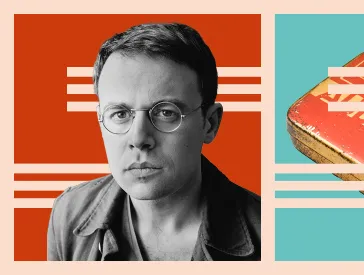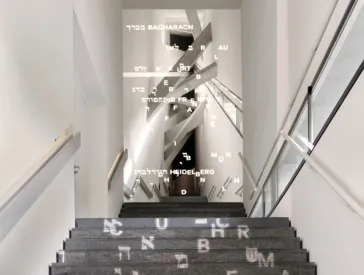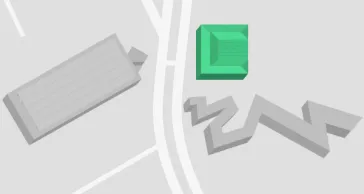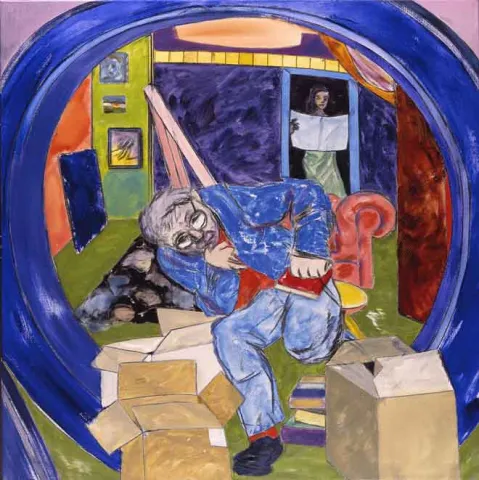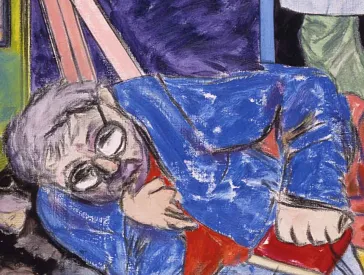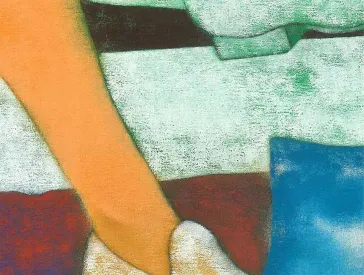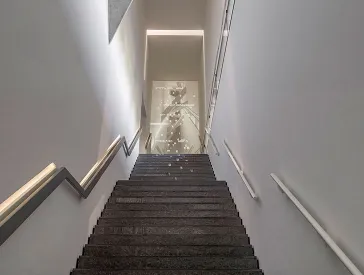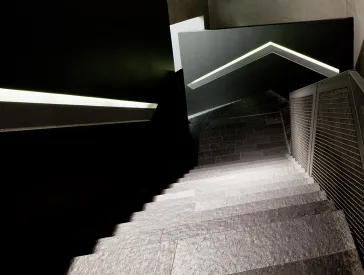R. B. Kitaj, 1932–2007
Obsessions
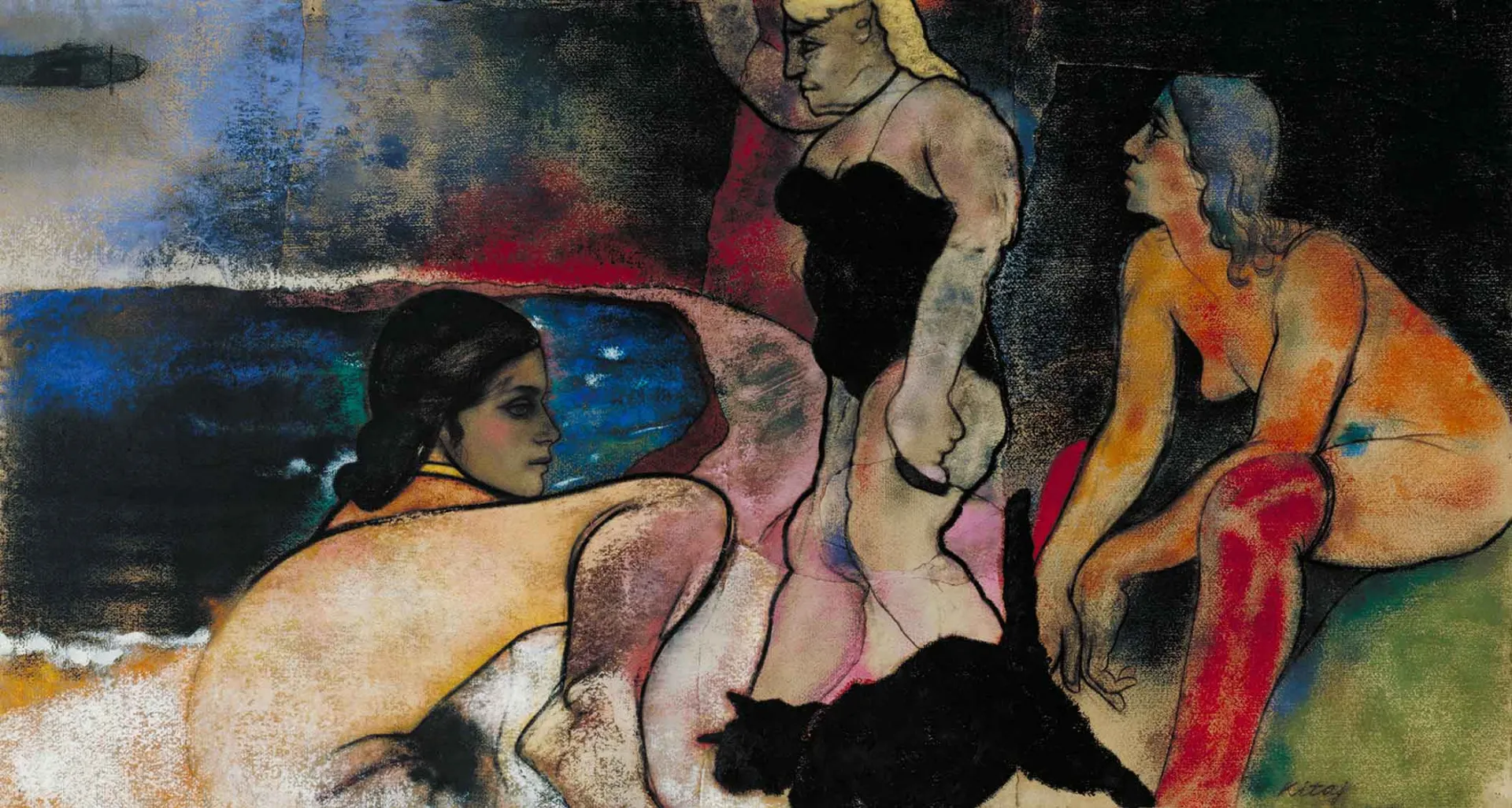
R. B. Kitaj, The Rise of Fascism, 1975–1979, pastel and oil on paper, 85 × 158 cm; Collection of R.B. Kitaj Estate
After the death of the painter R. B. Kitaj, in 2007, the Jewish Museum Berlin held the first wide-ranging show of his life’s work from autumn 2012 to early 2013. The traveling retrospective – 14 years after the preceding Kitaj retrospective – thoroughly represented each period of his extensive oeuvre with around 130 paintings, prints, and drawings.
Introduction to the exhibit with Cilly Kugelmann (Program Director of the Jewish Museum Berlin), Tracy Bartley (Leader of the R. B. Kitaj Studio in Los Angeles), Dr. Eckhart Gillen (exhibition curator) and Tom Freudenheim (art historian and journalist).
Lovers and enemies, phases of virility and physical frailty, politics, history, literature, philosophy, and foremost the question of his connection with Judaism – a product of neither religion nor Zionism – are the puzzle pieces with which Kitaj created his impressive images and collages.
Unconcerned by the tastes of the masses, Kitaj’s work resisted the fashionability of abstraction in the 1960s and he became a pioneer of contemporary figurative painting along with David Hockney, Frank Auerbach, Lucian Freud, and Leon Kossoff. Confronting the history of the mass murder of European Jews and grappling with outsider status led him to propose a Jewish art for the modern age, which he termed “diasporist” and enacted with a vibrant palette, rich subjects, and an enigmatic air.
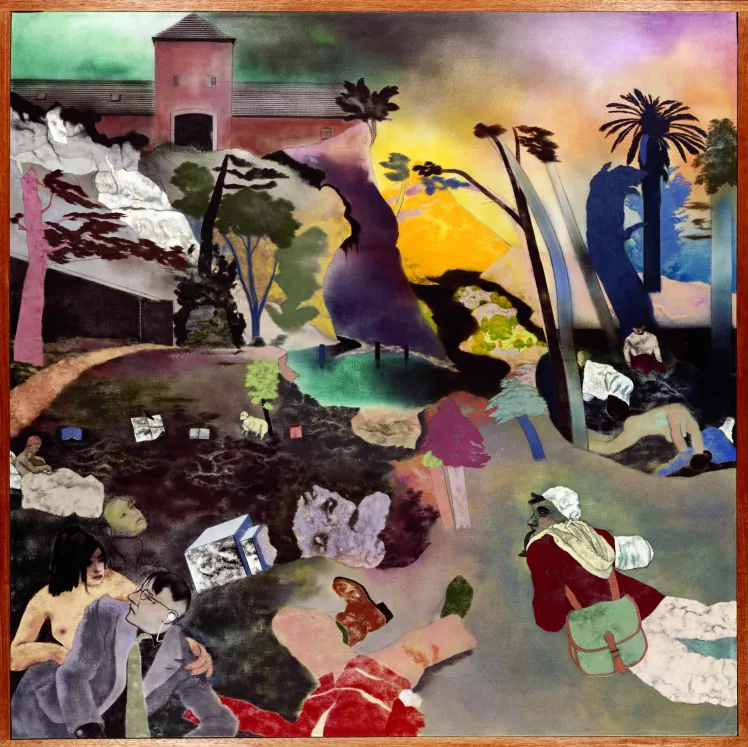
R. B. Kitaj, If Not, Not, 1975/76, oil on canvas and black chalk, 60 x 60 cm; Scottish National Portrait Gallery, Edinburgh
Today, Kitaj’s paintings can be found in the world's major museums and in large private collections. This exhibition was made possible by the generous support of lenders, among them the Museum of Modern Art in New York, the Tate in London, and the Thyssen-Bornemisza Museum in Madrid.
Exhibition Information at a Glance
- When 21 Sep 2012 to 27 Jan 2013
- Where Old Building, level 1
Lindenstraße 9-14, 10969 Berlin
See Location on Map
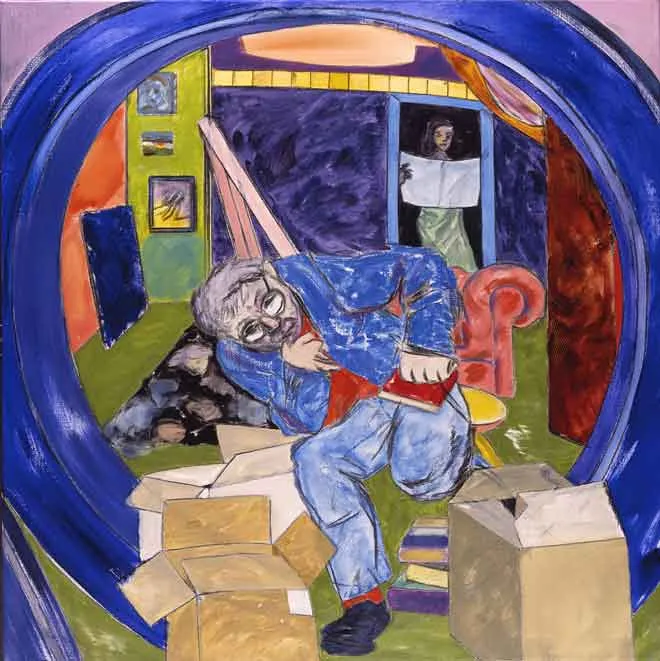 X
X
R. B. Kitaj, Unpacking my Library, 1990/91, oil on canvas, 122 x 122 cm; Collection of Joseph Kitaj
With the support of the Friends of the Jewish Museum Berlin
